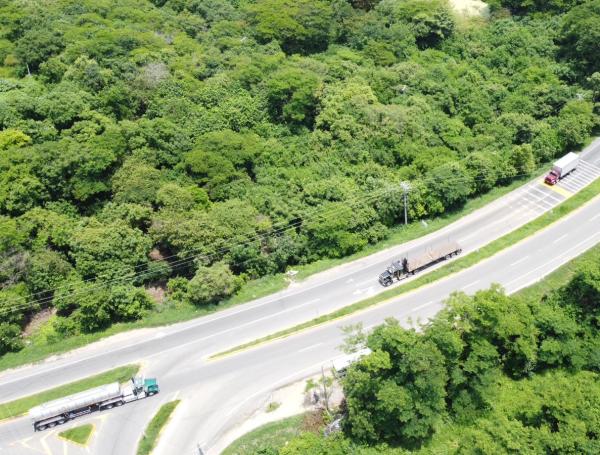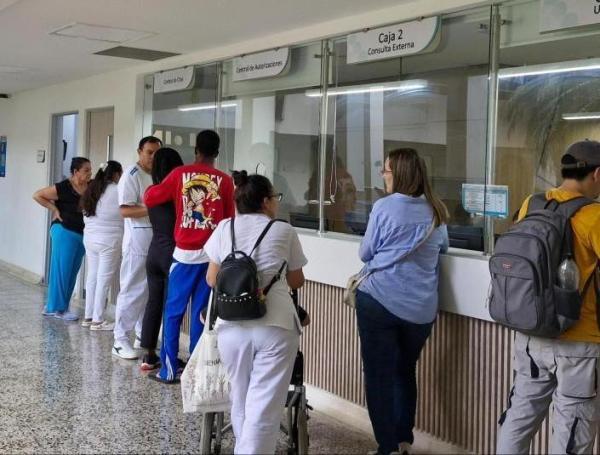President Gustavo Petro secured a 546.9 billion peso budget for his final year in office, after the Senate Plenary adopted the same text approved by the House of Representatives on Wednesday night, closing the process without any substantive changes. The final amount is 10 billion pesos less than the amount proposed by the Executive Branch, but the figure approved by the Legislature represents a 4 percent increase over the current budget.
This growth was driven primarily by an increase in operating expenses (8.8 percent), a decrease in debt service of nearly 11 percent, and a 5.3 percent increase in investment, according to the approved budget.
Despite the adjustments, the government's room for maneuver remains limited. More than 65 percent of the budget will be allocated to operational matters, while investment represents only about 16.2 percent of the total, a proportion that highlights the structural rigidities of public finances. The burden of debt service—close to 19 percent—leaves little room for new programs without an additional source of revenue, some analysts warn.
In response to the approval received by Congress, Finance Minister Germán Ávila said that the discussion took place in the legislature in a broad and in-depth manner, while also noting that the budget remains"linked" to a financing law that will be adjusted to 16.3 trillion pesos and whose debate will begin in the coming days.
The official emphasized that a series of adjustments were made in some ministries totaling nearly half a trillion pesos in the first debate, while in the second debate, these cuts amounted to an additional 1.5 trillion pesos. He emphasized that the general budget cuts were made in almost all entities.
He insisted that the adjustments to the financing law will seek to ensure that it does not affect low-income sectors and the family basket, that it is oriented towards the higher-income population and to resolve structural issues in health spending, since the goal is for those sectors with greater possibilities to contribute to the financing needs.
Higher payroll expenses
Of the 546.9 billion, the largest portion corresponds to operating expenses, which will take more than 358 billion next year, equivalent to almost two-thirds of the budget. This item covers the state payroll, which will cost about 66.4 billion in 2026, that is, 10.1 percent more than the current year's spending. The government proposed an allocation close to 67 billion, but had to adjust its claim by 0.5 percent.

The largest adjustments compared to the proposal presented by the Executive Branch were in the areas of procurement of goods and services, as well as transfers, with cuts of 3.7 and 2.3 percent, respectively, although these items, compared to the 2025 budget, increase by 3.4 percent for the former and 8.9 percent, respectively.
The second most important component is public debt service, to which more than 100 trillion pesos will be allocated in 2026, but 12.2 trillion pesos less than what was allocated for the current year, representing a drop of 10.8 percent. And while the amount allocated to paying external obligations next year will be 6.4 percent lower than in 2025, the amount allocated to paying domestic obligations will be 13.3 percent lower. This reflects the growing weight of the country's financial commitments, in a context of high interest rates and fiscal constraints.
Public investment, which includes economic and social development projects, will reach 88.4 billion pesos, a slight increase compared to the 83 billion pesos allocated for 2025. This includes funding for infrastructure, housing, water, education, health, and energy transition programs, pillars of the Petro administration's National Development Plan (PND).
The largest budget increases are concentrated in the education and health sectors, considered drivers of the current government's social policy. Education will receive an additional 6.6 trillion pesos, an 8.1 percent increase, bringing its total budget to 88.2 trillion. This will be the sector with the largest allocation from the State, strengthening the funding of public universities, the school feeding program, and investments in educational infrastructure.

The health sector, for its part, will see an even larger increase: an additional 11 trillion pesos (16.4 percent), for a total of 78.1 trillion. According to the Ministry of Finance, these resources seek to guarantee the sustainability of the system, finance primary care, and cover the commitments arising from the ongoing reform, which continues to be debated in Congress.
With Senate approval, the bill is ready for presidential approval, a step that will formalize the law governing public finances in 2026. This will be the final budget of the Petro administration and will mark the fiscal starting point for the next administration, which will take on the challenge of maintaining a balance between social investment and debt sustainability.

